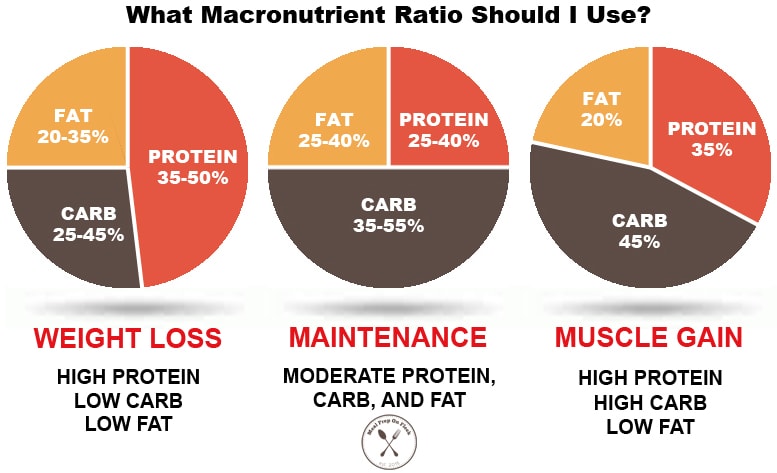Understanding Macro Calculators: How to Optimize Your Nutrition for Better Health and Fitness Results
Mastering Macro Calculators for Optimal Nutrition

Introduction
In today’s health-conscious world, understanding what you eat is more important than ever. Whether you are a fitness enthusiast, someone looking to lose weight, or just interested in maintaining a healthy lifestyle, nutrition plays a pivotal role in achieving your goals. One of the most effective tools available for managing your diet is a macro calculator. But what exactly is a macro calculator, and how can it help you achieve your health and fitness goals?
In this comprehensive guide, we will delve into the details of macro calculators, how they work, and why they are essential for anyone looking to take control of their nutrition. We’ll cover everything from the basics of macronutrients to the steps for using a macro calculator effectively. By the end of this article, you will be equipped with the knowledge to optimize your diet and reach your desired health outcomes.
What is a Macro Calculator?
A macro calculator is a tool that helps you determine the right balance of macronutrients—carbohydrates, proteins, and fats—based on your specific health goals, body type, and activity level. Macronutrients, often simply called “macros,” are the nutrients that provide energy to our bodies. They are essential for various bodily functions, from providing energy to repairing tissues and maintaining muscle mass.
Understanding Macronutrients
- Carbohydrates: These are the body’s primary source of energy. Carbs are broken down into glucose, which fuels our muscles and brain. They are especially important for those engaging in high-intensity activities like weightlifting or sprinting.
- Proteins: Proteins are crucial for muscle repair and growth. They also play a significant role in creating enzymes and hormones and supporting immune function.
- Fats: Often misunderstood, fats are vital for hormone production, brain function, and absorbing fat-soluble vitamins. Healthy fats, such as those from avocados, nuts, and olive oil, are essential for a balanced diet.
How Does a Macro Calculator Work?
A macro calculator takes into account several personal details such as age, sex, weight, height, and physical activity level to calculate your daily caloric needs. From there, it breaks down your calorie needs into percentages of carbohydrates, proteins, and fats. These percentages are based on your specific goals, whether it’s losing weight, building muscle, or maintaining your current weight.
Step-by-Step Guide to Using a Macro Calculator
- Enter Your Personal Information: Begin by inputting your age, sex, weight, height, and activity level. This helps the calculator determine your Basal Metabolic Rate (BMR), which is the number of calories your body needs at rest to maintain basic bodily functions.
- Select Your Goal: Decide whether you want to lose weight, gain muscle, or maintain your current weight. Your goal will significantly impact the macro ratios suggested by the calculator.
- Choose Your Activity Level: Your daily activity level is a key factor in determining your total caloric needs. Most macro calculators provide a range of activity levels to choose from, such as sedentary, lightly active, moderately active, very active, and extremely active.
- Calculate Your Macros: Once all information is entered, the macro calculator will provide a recommended daily intake of calories, carbohydrates, proteins, and fats. This is typically presented in grams, making it easier to plan meals and track intake.
- Adjust As Needed: Remember, a macro calculator provides a starting point. As you progress, you may need to adjust your macros based on how your body responds, changes in your activity level, or shifts in your goals.
Why Use a Macro Calculator?
1. Tailored Nutrition Plan
A macro calculator offers a personalized nutrition plan tailored specifically to your body’s needs and your fitness goals. Unlike generic diet plans, macro calculations consider various factors that make your nutritional requirements unique.
2. Flexible Dieting
Macro calculators align with the concept of flexible dieting, allowing you to eat foods you enjoy while still hitting your nutrition goals. This approach encourages a balanced diet rather than restrictive eating, making it more sustainable in the long term.
3. Improved Performance and Recovery
Athletes and fitness enthusiasts can benefit significantly from a macro calculator by optimizing their nutrition to enhance performance and recovery. Proper macro balance ensures that the body has enough energy for workouts and the nutrients needed for muscle recovery and growth.
4. Effective Weight Management
Whether your goal is to lose, gain, or maintain weight, understanding and managing your macros can lead to more effective and sustainable results. By controlling your macronutrient intake, you can better regulate your calorie consumption and ensure you’re eating the right amount to meet your goals.
Common Mistakes to Avoid When Using a Macro Calculator
While macro calculators are incredibly helpful, it’s important to avoid common mistakes that can hinder your progress.
1. Ignoring Micronutrients
While focusing on macronutrients is essential, don’t neglect the importance of micronutrients—vitamins and minerals that are vital for overall health. A diet rich in a variety of foods will ensure you’re getting both the macros and micros your body needs.
2. Overestimating Activity Level
One of the most common mistakes is overestimating your activity level, leading to an overestimation of calorie needs. Be honest about your activity level to ensure your macro calculations are accurate.
3. Not Tracking Your Intake Accurately
To effectively use a macro calculator, it is crucial to track your food intake accurately. Use a reliable app or food diary to record everything you eat and drink. This will help you stay accountable and make necessary adjustments to your diet.
4. Failing to Adjust Macros Over Time
Your nutritional needs may change as your weight, activity level, and goals evolve. It’s important to regularly revisit and adjust your macros to ensure continued progress towards your goals.
How to Incorporate Macros into Your Daily Routine
1. Meal Planning
Plan your meals in advance based on your macro goals. This will help you stay on track and avoid last-minute food choices that don’t align with your nutritional needs.
2. Use Food Tracking Apps
Food tracking apps can be a game-changer in managing your macros. Many apps allow you to scan barcodes, input recipes, and track your daily intake with ease.
3. Focus on Whole Foods
While flexible dieting allows for indulgences, aim to consume mostly whole, nutrient-dense foods. This approach ensures you’re not only meeting your macro requirements but also supporting your overall health with essential vitamins and minerals.
4. Stay Hydrated
Water plays a critical role in digestion and nutrient absorption. Make sure you are staying hydrated, as it can also help manage hunger and optimize performance.
The Science Behind Macros and Health
Research consistently shows that a well-balanced diet, tailored to individual needs, can improve overall health, reduce the risk of chronic diseases, and enhance physical performance. Balancing your macros can help regulate blood sugar levels, support muscle maintenance and growth, and ensure adequate energy levels throughout the day.
Key Studies on Macronutrient Balance
- Weight Loss and Satiety: Studies have shown that high-protein diets can increase satiety and reduce overall calorie intake, aiding in weight loss.
- Muscle Growth and Recovery: Protein is essential for muscle repair and growth, particularly after resistance training.
- Carbohydrates and Performance: Carbohydrates are the primary energy source for high-intensity exercise, making them crucial for athletes and those with active lifestyles.
Conclusion
A macro calculator is an invaluable tool for anyone serious about achieving their health and fitness goals. By understanding and managing your macronutrient intake, you can create a sustainable diet that supports your unique needs and objectives. Whether you’re looking to lose weight, build muscle, or maintain your current health status, a macro calculator can provide the guidance needed to optimize your nutrition.
Take Action Today! Start using a macro calculator to tailor your diet to your specific goals. Track your progress, adjust as needed, and enjoy the journey to a healthier, fitter you!




